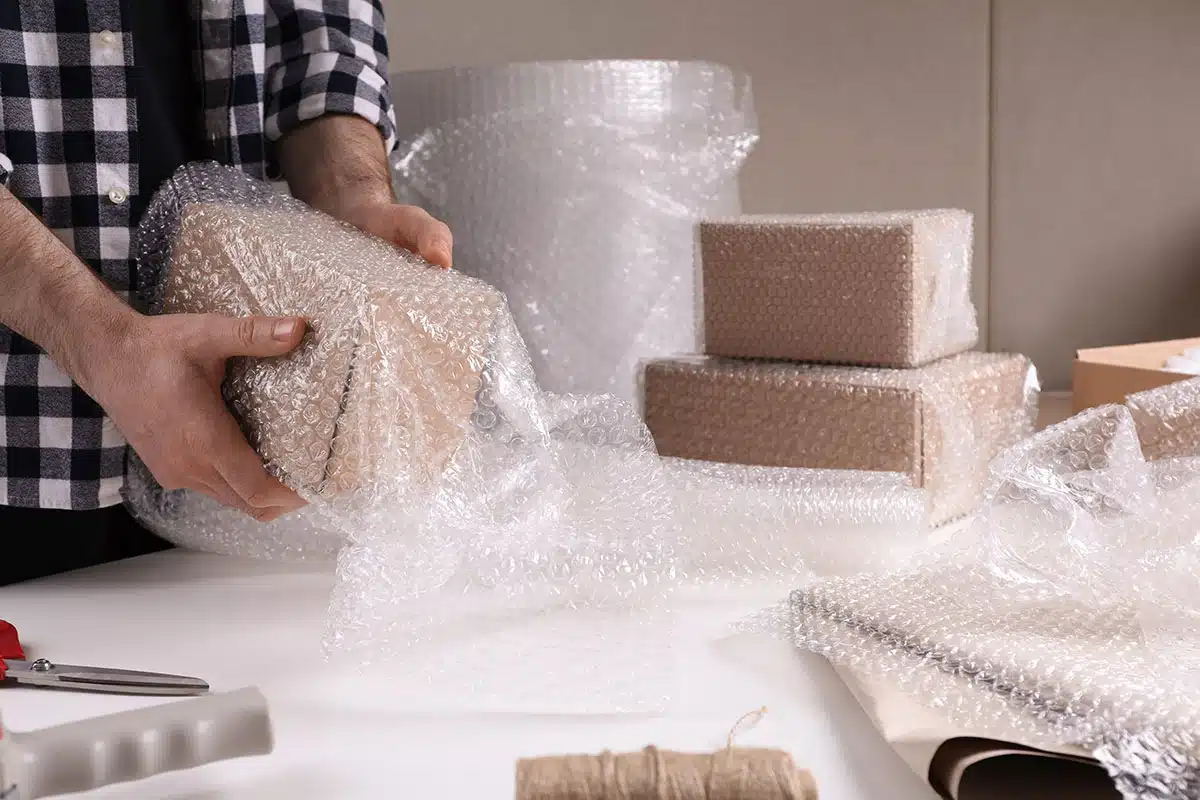It’s no secret that artificial intelligence (AI) and machine learning are infiltrating the way we do business—as well as our personal lives—in multiple ways. Uber uses AI to forecast the number of ride requests for different locations. Social media platforms customize user content by applying AI algorithms. And manufacturers across a variety of industries are using AI to take predictive maintenance to a new level, analyzing historical and real time data to anticipate failures and repair or replace machinery before something breaks. So it’s no surprise that electronics manufacturers have found yet another use for AI: optimizing electronics packaging.
The global market for AI-facilitated packaging is expected to grow at a compound annual growth rate (CAGR) of 55.2 percent from 2021 to 2026, according to Global Market Estimates, a market research and consulting company. This rapid increase in the use of AI to optimize packaging is no surprise, as improved packaging offers many benefits, from better product protection to improved brand positioning.
Because electronic devices tend to be fragile and prone to damage during transit, AI can be especially useful in optimizing their packaging.
Important Considerations in Electronics Packaging
Because electronic devices tend to be fragile and prone to damage during transit, packaging must be optimized for specific products. So how does an electronics manufacturer choose the best packaging? Opting for the cheapest solution doesn’t always save money in the long run. Manufacturers have many factors to balance and questions to consider, including:
- How well will the packaging protect the product?
- Does stronger packaging justify a heavier weight and higher shipping costs?
- Is there an acceptable level of returns for damaged products? If so, what is it?
- What is the optimal balance between packaging price and performance?
In addition to the questions above, manufacturers need to think about customer perceptions, as people are becoming more concerned about packaging pollution. In a 2020 survey, McKinsey & Company found that 60 to 70 percent of consumers said they would pay more for sustainable packaging. AI can be used to analyze vast stores of internal and public data to optimize packaging so that it meets electronics manufacturers’ requirements for quality, safety, and sustainability, allowing them to quickly find the right balance between cost and effectiveness.
3 Ways AI is Improving Electronics Packaging
Successful electronics manufacturers are constantly evaluating new technologies and seeking ways to improve production. Across the nation, these savvy manufacturers are leveraging AI and machine learning to optimize their product packaging in three critical areas.
Design
AI can help companies optimize electronics packaging by analyzing data such as product type, weight, and fragility. It can also factor in other considerations such as company sustainability goals and shipping distance. AI can even be used to incorporate packaging considerations into the product design phase, helping engineers configure a product that costs less to ship and is more resilient in transit, resulting in fewer returns.
AI algorithms are now being used to customize packaging for a broad range of products. A TV, for example, may require a box with thicker corners for better edge protection. Other electronics packaging considerations include protection from falls, extreme temperature, vibration, humidity, sunlight, contamination, and water. To minimize vibration, containers sometimes include internal locking mechanisms. And to make product inspection easier, clear locking containers—such as those manufactured by U.S.-based Clamtainer—allow final inspection of a component without disturbing the packaging.
AI can also be used to determine the ideal packaging material for a particular product. This is especially important given the range of new materials available, which are far more diverse than traditional cardboard and polystyrene packing peanuts. Mushroom packaging, for example, is made from an organic material that’s literally grown to a precisely programmed shape using a process that takes just seven days. Other novel materials include bamboo, cornstarch, and seaweed—sustainable substances that win kudos from the general public, enhance a manufacturer’s reputation among consumers, and can even cost less than traditional packaging.
Another way that AI is impacting package design is by using 3D prototypes to speed up the time it takes to determine the optimal packaging for any given product. In the same way that 3D prototyping is used to test product designs, packaging options for the finished product can be tested and quickly modified using AI models and 3D printing technology—without the expense or time of producing the actual electronics packaging.

Sustainability
Optimizing a product’s packaging should be part of any initial product design, especially if sustainability is important to your company—the European Commission estimates that more than 80 percent of all product-related environmental impacts are determined during the design phase. However, leveraging AI for sustainability goes beyond design. It can also help reduce waste, decrease shipment damage, and lower shipping costs. Amazon has been using an AI model that learns from real-world customer complaint data to accomplish these goals. Applying their machine learning model to hundreds of thousands of packages, they have been able to reduce waste, cut shipment damage by 24 percent, and reduce shipping costs by five percent.
AI can also help manufacturers design packaging with recycling in mind. This not only helps companies meet their environmental, social, and governance (ESG) objectives, it’s also becoming an essential objective now that more and more local governments are enacting extended producer responsibility (EPR) regulations. For example, California passed a law in 2022 that imposes new regulations and fees on manufacturers of single-use plastic packaging. Other states—including Maine, Oregon, and Colorado—have also passed strict EPR laws. And while many of these regulations primarily affect the makers of plastic forks, straws, and bags, they are expanding to include packaging for all kinds of products.
Supply Chain Management

AI can also help in supply chain management, from production inspection to shipping improvements, enhancing or even replacing human efforts. Unlike a person, AI never gets bored or distracted—it doesn’t miss product defects. And unlike human brains, which have a tendency to fill in missing data and thus see things that aren’t there, an AI “brain” lacks this imagination, and so more accurately detects a product’s true state.
AI can even improve on the traditional “machine vision” technologies that are used for inspections. Many current visual inspection technologies are capable of spotting variations from a programmed standard, but can’t determine if the variation is acceptable. For example, in the case of date labeling on a package, if a date is in a different font, many current inspection systems will reject it as an error. Harry Norman, founder of OAL, a British automation and robotics company, likens traditional machine vision to having vision without a brain. Incorporating AI into the system gives the machine a “brain,” one that can be trained to account for variation. For example, a date stamp with a tilted “2” that would have been rejected in the past with traditional visual inspection technology can now be recognized as acceptable.
Yet another way AI is strengthening the supply chain is by streamlining the shipping process. Manufacturers now have access to data-driven shipping automation platforms that include packing algorithms. According to ShipHawk, a U.S.-based provider of automated shipping solutions, companies can lower shipping-related costs by more than 20 percent with data-driven shipping. Machine learning algorithms can also be used to assign packages unique RFID tags so that products can be easily tracked throughout the entire supply chain.
Don’t Set It and Forget It
Keep in mind that AI is only as good as those who design, program, and monitor the technology. So be cautious about taking a hands-off approach. But with the right oversight, AI can transform electronics packaging. The technology’s ability to improve design, enable the use of novel materials, and make recycling easier means that manufacturers will undoubtedly continue to use AI to optimize their product packaging for years to come.